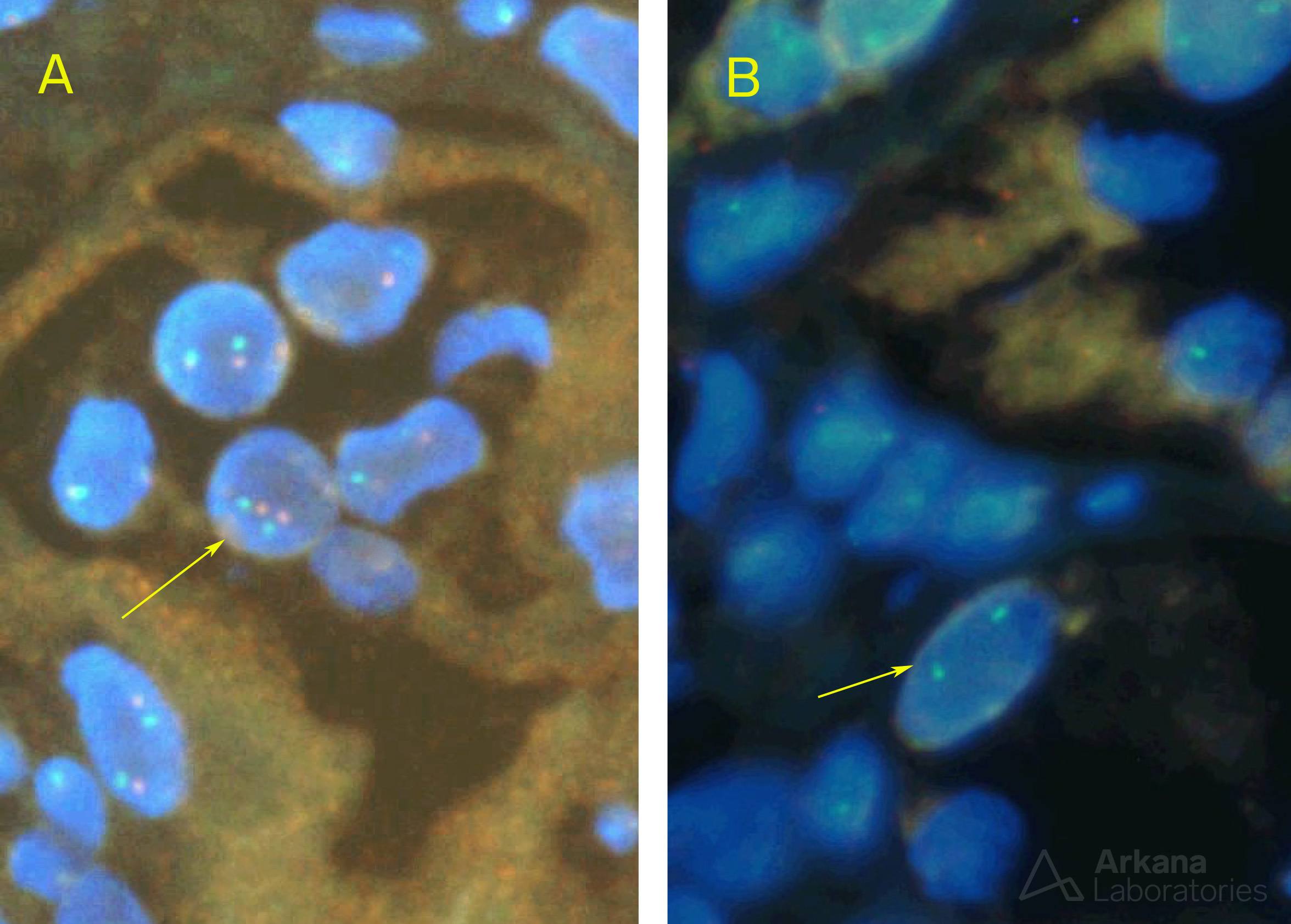Nephronophthisis is an autosomal recessive tubulointerstitial nephropathy that is a leading genetic etiology of end stage renal disease in children and young adults. Approximately 60% of patients with a known genetic etiology of nephronophthisis are due to homozygous deletion of the NPHP1 gene. Fluorescence In-Situ Hybridization is both sensitive and specific for the detection of NPHP1 deletion in renal biopsies suspected to represent nephronophthisis. (A) Cases without NPHP1 deletion show nuclear profiles (DAPI blue) with two probe signals for both the control centromeric probe CEP2 (FITC green) and NPHP1 (CY3 orange). An arrow indicates a nuclear profile with two signals of both probes. Not all cells have two green and orange signals due to nuclear cut-through inherent in three-micron tissue sections (B) Cases with NPHP1 deletion reveal nuclear profiles with two probe signals for only CEP2– FITC conjugate (green) probe, and no signal for the NPHP1 CY3- conjugated probe (orange). The arrow indicates a nuclear profile with two CEP2 probe signals and no signals for the NPHP1 probe. Not all cells have two green signals due to nuclear cut-through inherent in three-micron tissue sections.
Reference: CP Larsen, SM Bonsib, ML Beggs, JD Wilson. Fluorescence in situ hybridization for the diagnosis of NPHP1 deletion-related nephronophthisis on renal biopsy. 2018. Hum Path. [epub ahead of print]
Quick note: This post is to be used for informational purposes only and does not constitute medical or health advice. Each person should consult their own doctor with respect to matters referenced. Arkana Laboratories assumes no liability for actions taken in reliance upon the information contained herein.


